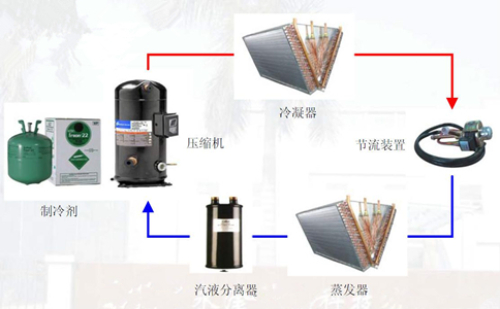
Introduction: China's heat pump technology research started relatively late and there is a certain gap compared to developed countries. However, with the serious shortage of energy, people have become more aware of environmental protection and energy conservation, and the market for heat pumps in China has developed rapidly. Although heat pump technology is currently entering a period of maturity worldwide, the research, production, and practical use of high-temperature heat pumps are not sufficient.
A brief history of heat pump development
The term heat pump was first proposed by Europeans in the early 20th century. However, the theoretical basis of the heat pump has to be traced back to Sadi Carnot, a French physicist in the early 19th century. He published the Carnot Cycle Theory in 1824, which became the origin of heat pump technology.
In 1845, the British physicist JP Joule completed the Joule free expansion experiment to study the internal energy of gas, and proposed the principle of “the temperature can be changed by changing the pressure of the compressible fluidâ€.
In 1850 the British scientist W. Thomson (later renamed L. Kelvin) proposed the concept of a heat pump using the inverse Carnot cycle for heating, which was called the Heat Multiplier. Kelvin anticipates the possibility of a closed cycle, but at that time manufacturing technology could not support him to create a modern heat pump device. After Kelvin, many scientists and engineers have conducted extensive research on heat pumps for 80 years.
In the 1930s, the development of refrigeration technology and the market demand promoted the development of heat pumps. In 1912, Zurich, Switzerland successfully installed the world's first heat pump with river water as a low heat source for heating, and filed a patent. This is the earliest water source heat pump system. In 1931, California used heat pump equipment to heat office buildings. This was the earliest use of large-capacity heat pumps. In World War II, the shortage of materials in wartime promoted the development of large-scale heat-supply heat pumps and industrial heat pumps. Heat pumps are not only used for war equipment but also provide drinking water for people. After World War II, the large demand for heating and relative energy shortages brought about by the rapid development of the industrial economy promoted the development of large-scale heating and industrial heat pumps. The 1973 global energy crisis further promoted the development of heat pumps worldwide. However, the large-scale commercial application of heat pumps in the world is the most recent 20 years.
The research of heat pump technology in China started relatively late and there is a certain gap compared with developed countries. However, with the serious shortage of energy, people have become more aware of environmental protection and energy conservation, and the market for heat pumps in China has developed rapidly. Although heat pump technology is currently entering a period of maturity worldwide, the research, production, and practical use of high-temperature heat pumps are not sufficient.
Heat pump introduction
Heat pump (English name - Heat Pump)
Definition 1:
Heat transfer from low temperature heat source to high temperature heat source.
Definition 2:
A device that uses heat energy from a low-temperature heat source to a high-temperature heat source to compensate for the loss of a portion of low-grade energy (mechanical energy, electrical energy, or high-temperature thermal energy). The essence of this is to provide a lower grade and more amount of energy by lowering a certain amount of work quality.
Because heat pumps convert low-temperature thermal energy into high-temperature thermal energy and improve the effective utilization of energy, it is an important way to recover low-temperature residual heat and use the energy stored in environmental media (groundwater, surface water, soil, outdoor air, etc.).
How High Temperature Heat Pumps Work
(1) Compression process: Low-temperature, low-pressure refrigerant gas is compressed into a high-temperature and high-pressure gas by a compressor. The work done by the compressor at this time is converted into the internal energy of the refrigerant gas, so that the temperature rises and the pressure increases, which is thermodynamically called the adiabatic process.
(2) Condensation process: The high-temperature and high-pressure refrigerant gas from the compressor flows through the condenser and continuously releases heat to the outside through the use of wind or water to condense into medium-temperature high-pressure refrigerant liquid. When the liquefaction temperature of the refrigerant decreases but the pressure does not change, it is thermodynamically called isobaric process.
(3) Throttling process: The medium-temperature and high-pressure refrigerant liquid from the condenser is throttled by the throttling device to become a low-temperature and low-pressure refrigerant liquid. In thermodynamics, it is called the isothermal process.
(4) Evaporation process: The low-temperature and low-pressure refrigerant liquid from the throttling device flows through the evaporator and continuously absorbs heat into the room with wind or water and evaporates into a low-temperature and low-pressure refrigerant gas. The absorbed heat becomes the latent heat of the refrigerant. Although the temperature rises little, the internal energy increases a lot. Due to the small change in pressure, it is thermodynamically called the isostatic process.
Al-alloy Lift Platform
The AL-alloy lift platform also called Al-Alloy Mast Hydraulic Lift, it can be Single mast aluminum Aerial Work Platform, double mast hydraulic lift
Our hydraumatic lifting are designed for aerial access applications, from the minimum 1.5 meters reach height up to 16 meters reach height available, with different sizes and heights, these scissor lifts enable you to reach the most hard-to-access overhead spaces.
The manually propelled Hydraumatic lifting can do many jobs such as, steel structural warehouse construction, building maintenance, lamp repairing, Street Lighting Repair, Painting, Construction etc.
We offer many different power sources for our Hydraumatic lifting, including but not limited to 220v single phase, 380v three phase, 110v single phase, or even a 24V DC battery powered model.
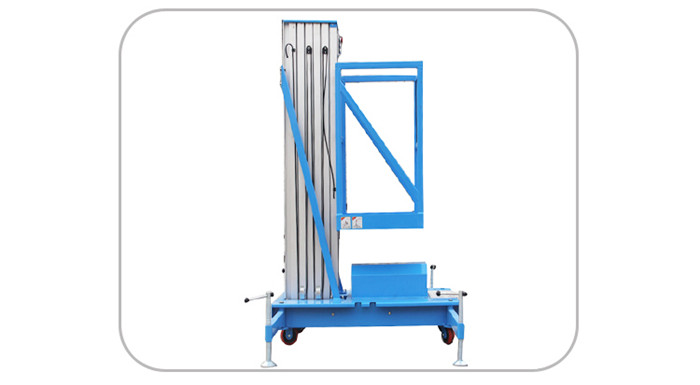
Features:
Emergency stop button
Charge lamp
Double Controller Operation
Emergency descent PLB
Limit switch
Level indicator
Overload limit
Maximum working height: 8 m, 10 m and 12 m three kinds of models for your choice
Small size (1.42 m * 0.84 m) ensures work in a smaller space
Precise level display device ensures the accurate and reliable leveling operation.
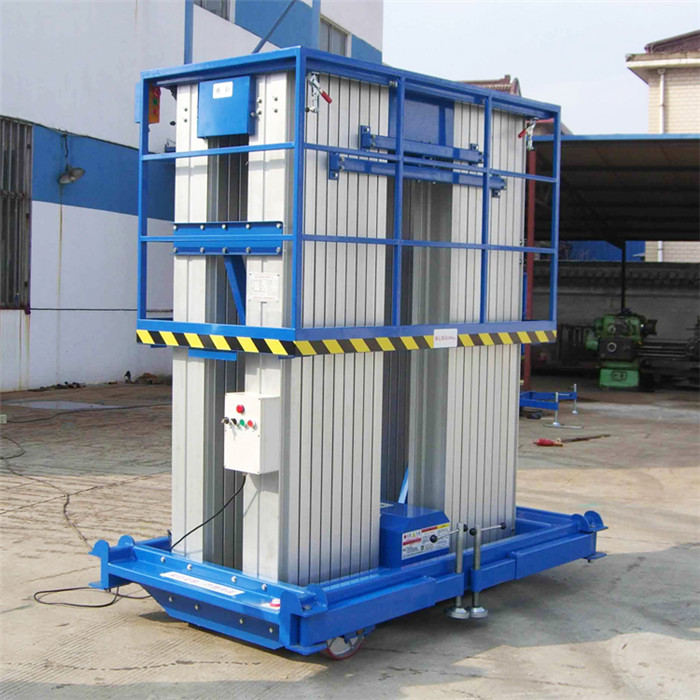
Single mast aluminum work platform
|
Model |
Working Height (m) |
Platform Height (m) |
Capacity (kg) |
Dead Weight (kg) |
Closing Size (mm*mm*mm) |
Power Source |
Motor |
|
SHJ1-5 |
5 |
3.5 |
100 |
180 |
1100*830*1900 |
220V 50Hz single phs |
1.5kw |
|
SHJ1-6 |
6 |
4.5 |
100 |
220 |
1100*830*1900 |
||
|
SHJ1-8 |
8 |
6.4 |
100 |
260 |
1200*830*1900 |
||
|
SHJ1-9 |
9 |
7.4 |
100 |
320 |
1200*950*2100 |
||
|
SHJ1-10 |
10 |
8.4 |
100 |
357 |
1200*950*2300 |
||
|
SHJ1-12 |
12 |
10.2 |
100 |
400 |
1300*950*2300 |
||
|
SHJ1-13 |
13 |
11.3 |
100 |
420 |
1400*950*2300 |
||
|
SHJ1-14 |
14 |
12.2 |
100 |
450 |
1500*1000*2600 |
Double mast aluminum work platform
|
Model |
Working Height (m) |
Platform Height (m) |
Capacity (kg) |
Dead Weight (kg) |
Closing Size (mm*mm*mm) |
Power Source |
Motor |
|
SHJ1-8 |
8 |
6.5 |
200 |
430 |
1500*900*1900 |
220V 50Hz single phs |
1.5kw |
|
SHJ1-10 |
10 |
8.5 |
200 |
560 |
1500*900*2100 |
||
|
SHJ1-12 |
12 |
10.5 |
200 |
380 |
1500*900*2350 |
||
|
SHJ1-14 |
14 |
12.2 |
200 |
620 |
1600*1000*2600 |
||
|
SHJ1-16 |
16 |
14.2 |
200 |
820 |
1800*1000*3000 |
2.2kw |
|
|
SHJ1-18 |
18 |
16.2 |
200 |
930 |
1800*1000*3100 |
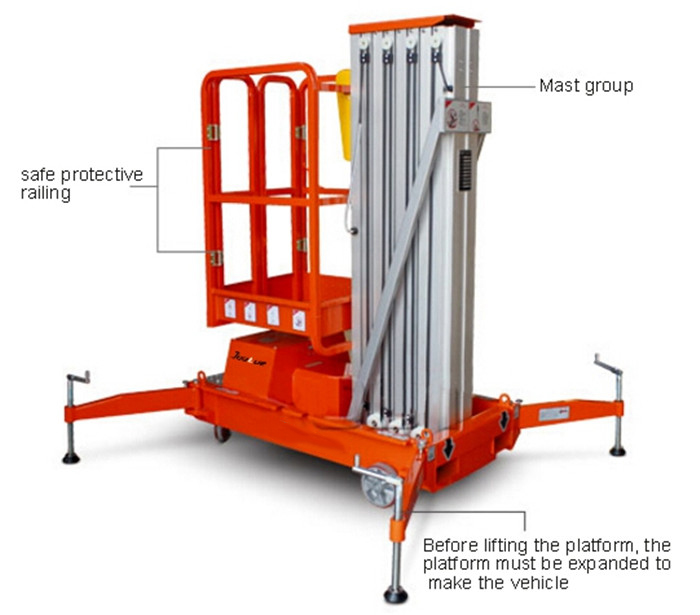

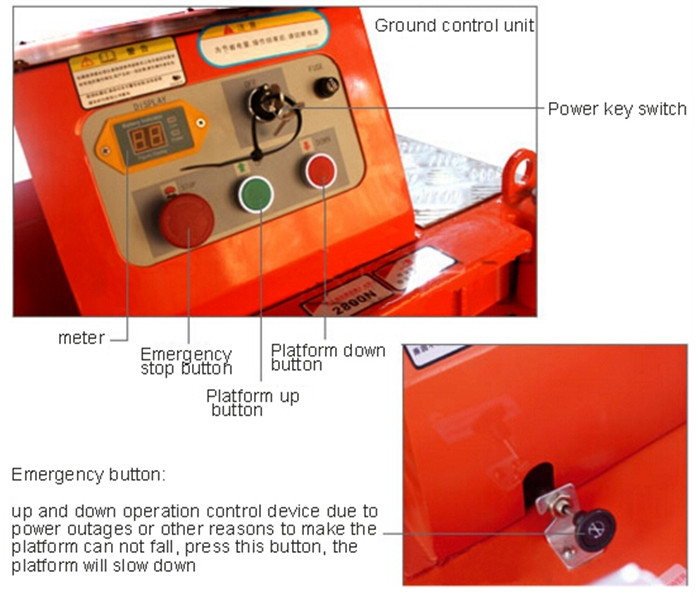
More for choice:

Aluminum Alloy Lift Platform,Aluminum Alloy Lifting Table,Aluminum Alloy Lifts,Man Lift
Jiangxi Mide Industrial Co., Ltd. , https://www.midecrane.com